#Southern emerald damselfly
Explore tagged Tumblr posts
Text
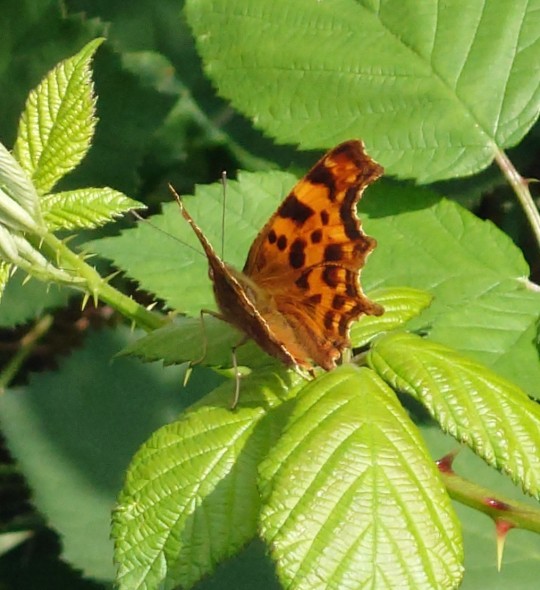

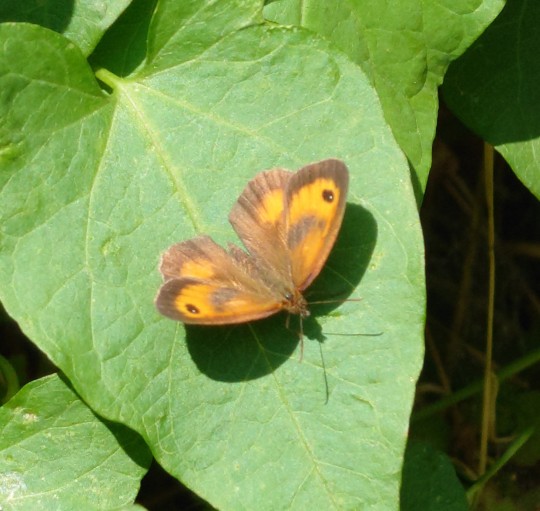

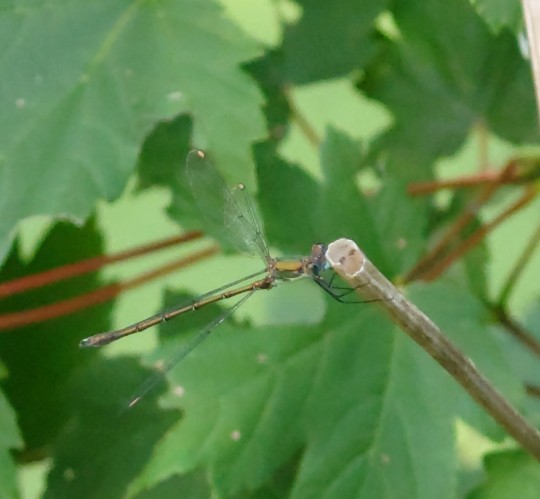

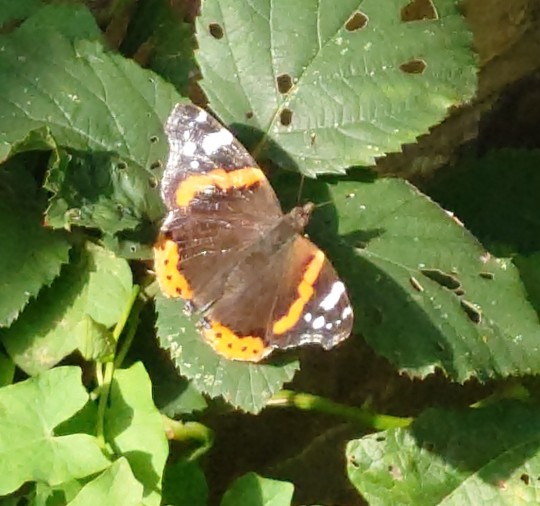

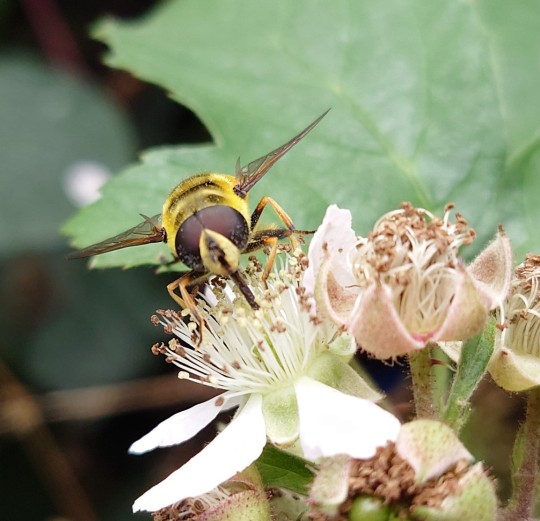

Some flyers from my garden! How many do you recognise?
- - -
[All photos taken by me, DeeperMadness, on a Sony Xperia 1 IV]
#Butterfly#Moth#Dragonfly#Damselfly#Hoverfly#Mimic#Photography#Flower#Garden#My photos#Comma butterfly#Jersey tiger moth#Apple leaf skeletonizer#Holly blue#Gatekeeper#Red admiral#Banded demoiselle#Demoiselle#Southern emerald damselfly#Southern emerald
13 notes
·
View notes
Text
My Great British Wild Year: Part 3 of 5-Dragonflies, damselflies and other wildlife
I had a dazzling year of dragonflies, from perfect moments by a stream at Nant-y-Pandy (The Dingle) on Anglesey seeing a colossal Golden-ringed Dragonfly to Keeled Skimmers in Pig Bush, New Forest’s boggy areas I had so many wonderful moments. Four-spotted Chaser was a star of my year with enchanting times seeing them at RSPB Valley Wetlands and Cors Dddyga as well as Hickling Broad, with brilliant Broad-bodied Chaser a key species enjoyed too. Emperors in all their masterful glory including one seen egg laying, eye catching and bold Southern Hawkers and marvellous manoeuvring Migrant Hawkers were ones I enjoyed fine views of locally and further afield so many times through the year. Hawkers dominated my year with gripping moments seeing distinctive Brown Hawker and also a fantastically fresh new species for us the Norfolk Hawker a key moment in my year on July trips to Norfolk and Rutland. Black-tailed Skimmer was a shining constant on my Lakeside walks in summer weeks, passing on the baton to scintillating Common Darter as well as Migrant Hawker as the season and year went on, the Common Darter another I had a great year for also seeing some mating. Delicate Ruddy Darter and Hairy Dragonfly were good to see too. A pivotal moment in my dragonfly year and an enchanting spectacle came at Thursley Common in late September when I was amazed to see so many slick, dainty and fabulous Black Darters.

Norfolk Hawker at RSPB Strumpshaw Fen
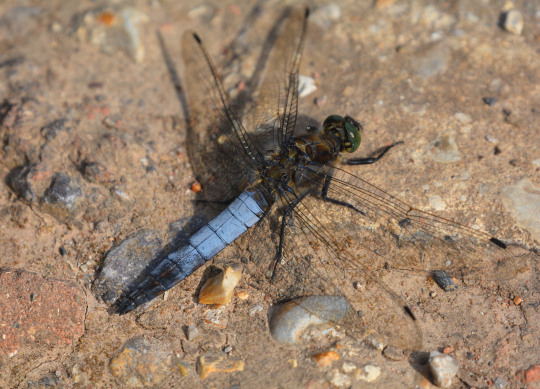
Black-tailed Skimmer at Lakeside in June
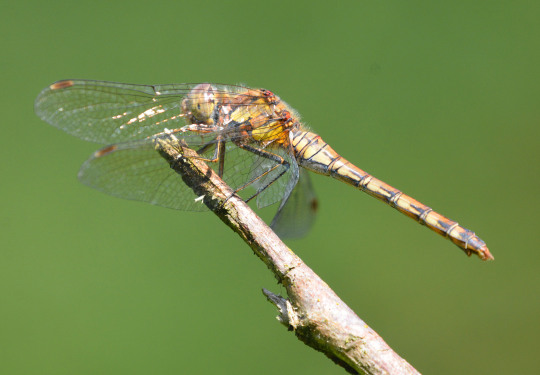
A Common Darter that was magical to see at Lakeside in August
It was an Azure Damselfly year for sure with especially at Lakeside Country Park and also at RSPB Cors Ddyga these splendid damselflies seen well. Especially at Lakeside Blue-tailed Damselflies were a strong theme of my year seeing so many, with strong showings from Beautiful and Banded Demoiselle this year. Pinnacles of my dreamy damselfly year perhaps were at at Hickling Broad when we saw a precious Emerald Damselfly, seeing them again twice in the September week off at RSPB Minsmere and Thursley.
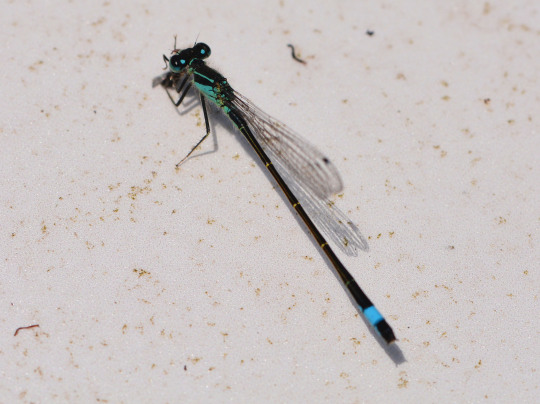
A Blue-tailed Damselfly I enjoyed seeing at Cors Ddyga too.
I enjoyed immersing myself in other parts of nature I am less familiar with again this year especially other insects with some epic things seen both new and that I had before. Beetles playing a big part in this with tremendous views of Green Tiger beetle at Bentley Wood again, a striking Rose Chafer beetle seen at South Stack, Chrysomela populi at Newborough, Cardinal beetle, Swollen-thighed Beetle, Oedemera lurida, Black-and-yellow Longhorn beetle at Lakeside, oil beetles, bold Bloody-nosed beetle, Black Clock beetle and Violet Ground beetle on the Norfolk and Rutland July weekends respectively, many splendid Common Red Soldier beetles in the summer and Black-spotted Longhorn beetle at Bentley Wood. I did well for caterpillars this year too with Oak Eggar, Fox moth, Yellow-tail moth, Peacock butterfly and Garden Tiger moth ones standouts. Common Field Grasshopper, Roesel’s Bush-cricket, Long-winged Conehead and giant Great Green Bush-cricket a sensation to see on an insect fest at Durlston made it a strong cricket/grasshopper year for me. As well as a fair few Hornets themselves I had a really good year for seeing Hornet Mimic Hoverflies in the summer again and my first ever Lesser Hornet Hoverflies, truly appealing insects. I had great moments seeing Long and Marmalade Hoverfly this year too. One of my greatest wild moments of the year came in early August when I was euphoric to fulfill a goal of a seeing a Wasp Spider in the grass of Lakeside Country Park. An outstanding arachnid, and another was a treat to see a few times this year beautiful Nursery Web spider in a strong year of spiders I had with Long-bodied Cellar spider another key species especially in autumn. I got excellent views of Common Lizard and Slow Worm in 2023.
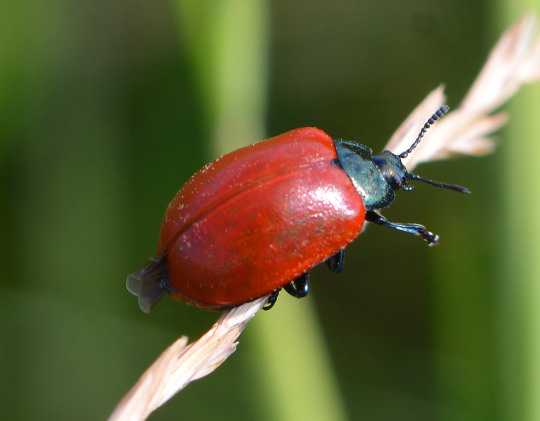
An eyecatching Chrysomela populi
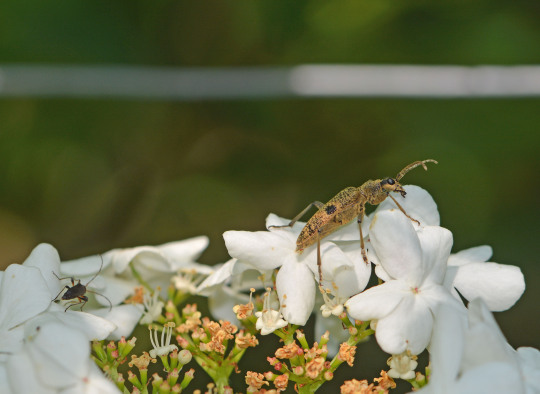
Grammoptera ruficornis and Black spotted Longhorn beetle at Bentley Wood
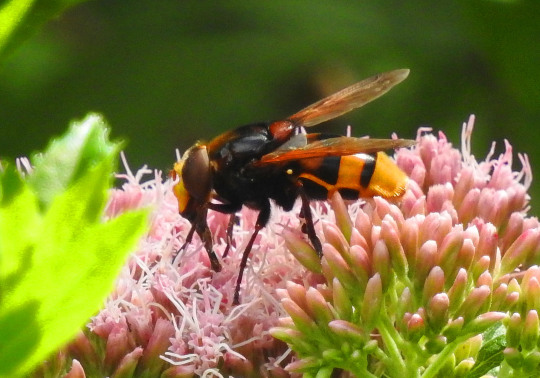
Hornet mimic hoverfly on hemp agrimony at Winnall Moors
#wildlife#photography#2023#highlights#happy#hornet mimic hoverfly#black darter#common darter#ruddy darter#brown hawker#emperor#norfolk hawker#migrant hawker#southern hawker#green tiger beetle#oil beetle#blue-tailed damselfly#emerald damselfly#macro#photos#europe#england#wales#uk#britain#earth#nature#peacok butterfly caterpillar#black clock beetle#hornet
1 note
·
View note
Text
Back on my hyperfixation shenanigans so I have not slept and here's a list of what I consider to be the prettiest beetles, butterflies and moths, damselflies, and grasshoppers and crickets that inhabit Colorado and Kentucky according to insectidentification.org :
COLORADO
Emerald ash borer (Agrilus planipennis)
Fifteen-spotted lady beetle (Anatis labiculata)
Golden tortoise beetle (Charidotella sexpunctata)
Knapweed root weevil (Cyphocleonus achates)
Longhorn beetle (Semanotus amethystinus)
Dogbane Leaf Beetle (Chrysochus auratus)
European Ground Beetle (Carabus nemoralis)
Golden Net-wing Beetle (Dictyoptera aurora)?
Margined Blister Beetle (Epicauta funebris)
May Beetle - P. lanceolata (Phyllophaga lanceolata)
Mottled Tortoise Beetle (Deloyala guttata)
Pleasing Fungus Beetle (Gibbifer californicus)
Poplar Borer Beetle (Saperda calcarata)
Shining Leaf Chafer - Anomala spp. (Anomala spp.)
Signate Lady Beetle (Hyperaspis signata)
American Lappet Moth (Phyllodesma americana)
Cinnabar Moth (Tyria jacobaeae)
Common Checkered-Skipper (Pyrgus communis)
Glover's Silkmoth (Hyalophora columbia gloveri)
Great Ash Sphinx Moth (Sphinx chersis)
Autumn Meadowhawk (Sympetrum vicinum)
Black Saddlebags Skimmer (Tramea lacerata)
Bird Grasshopper (Schistocerca spp.)
Obscure Bird Grasshopper (Schistocerca obscura)
Sooty Longwing Katydid (Capnobotes fulginosus)
KENTUCKY
Andrew's Snail-eating Beetle (Scaphinotus andrewsii)
Black Firefly (Lucidota atra)
Calligrapha Beetle (Calligrapha spp)
Eastern Hercules Beetle (Dynastes tityus)
Emerald Euphoria Beetle (Euphoria fulgida)
Glowworm (Phengodes spp.)
Goldsmith Beetle (Cotalpa lanigera)
Metallic Wood-boring Beetle: Chalcophora (Chalcophora fortis)
Notched-mouth Ground Beetle (Dicaelus purpuratus)
One-spotted Tiger Beetle (Apterodela unipuncata)
Rainbow Darkling Beetle (Tarpela micans)
Rainbow Scarab Beetle (Phanaeus vindex)
Six-spotted Tiger Beetle (Cicindela sexguttata)
Southern Sculptured Pine Borer Beetle (Chalcophora georgiana)
Stag Beetle (Lucanus capreolus)
Twice-stabbed Lady Beetle (Chilocorus stigma)
Vietinghoff's Ground Beetle (Carabus vietinghoffii)
Abbott's Sphinx Moth (Sphecodina abbottii)
American Ermine Moth (Yponomeuta multipunctella)
Arched Hooktip (Drepana arcuata)
American Bird's-Wing Moth (Dypterygia rozmani)
Arcigera Flower Moth (Schinia arcigera)
Attentive Crocus Moth (Xanthotype attenuaria)
Basswood Leafroller (Pantographa limata)
Beautiful Wood-Nymph (Eudryas grata)
Black-waved Flannel Moth (Megalopyge crispata)
Blackberry Looper (Chlorochlamys chloroleucaria
Blinded Sphinx Moth (Paonias excaecata)
Bluish Spring Moth (Lomographa semiclarata
Buck Moth (Hemileuca maia)
Carmine Snout Moth (Peoria approximella)
Carrot Seed Moth (Sitochroa palealis)
Cecropia Silk Moth (Hyalophora cecropia)
Changeable Grass-Veneer (Fissicrambus mutabilis)
Colorful Zale (Zale minerea)
Common Lytrosis Moth (Lytrosis unitaria)
Confused Eusarca (Eusarca confusaria)
Cross-lined Wave (Timandra amaturaria)
Curve-toothed Geometer (Eutrapela clemataria)
Dark-banded Geometer (Ecliptopera atricolorata)
Deep Yellow Euchlaena (Euchlaena amoenaria)
Diaphania costata (Diaphania costata
Dimorphic Macalla (Epipaschia superatalis)
Dot-lined White (Artace cribrarius)
Dotted Gray (Glena cribrataria)
Drab Prominent (Misogada unicolor)
Eight-spotted Forester Moth (Alypia octomaculata)
Elder Shoot Borer (Achatodes zeae)
Explicit Arches (Lacinipolia explicata)
Eyed Paectes Moth (Paectes oculatrix)
Falcate Orangetip (Anthocharis midea) (female)
Fall Webworm (Hyphantria cunea)
False Crocus Geometer (Xanthotype urticaria
Fervid Plagodis (Plagodis fervidaria)
Fig Sphinx (Pachylia ficus)
Friendly Probole Moth (Probole amicaria)
Giant Leopard Moth (Hypercompe scribonia)
Goldcap Moss-eater Moth (Epimartyria auricrinella)
Gray-edged Hypena (Hypena madefactalis)
Green Arches (Anaplectoides prasina)
Hag Moth (Phobetron pithecium
Hibiscus Leaf Caterpillar Moth (Rusicada privata)
Imperial Moth (Eacles imperialis)
Lesser Maple Spanworm Moth (Speranza pustularia
Luna Moth (Actias luna)
Melissa Blue Butterfly (Plebejus melissa spp.)
Modest Sphinx Moth (Pachysphinx modesta)
Morbid Owlet Moth (Chytolita morbidalis)
Orange-patched Smoky Moth (Pyromorpha dimidiata)
Pale Beauty (Campaea perlata)
Pale Lichen Moth (Crambidia pallida)
Pale Metarranthis (Metarranthis indeclinata)
Pandorus Sphinx Moth (Eumorpha pandorus)
Parthenice Tiger Moth (Apantesis parthenice)
Pearly Wood-Nymph Moth (Eudryas unio)
Pero Moth (Pero spp.)
Pink-patched Looper (Eosphoropteryx thyatyroides)
Pipevine Swallowtail (Battus philenor)
Pistachio Emerald Moth (Hethemia pistasciaria)
Plebeian Sphinx Moth (Paratrea plebeja) (Caterpillar)
Primrose Moth (Schinia florida)
Promiscuous Angle Moth (Macaria promiscuata)
Raspberry Pyrausta (Pyrausta signatalis)
Rustic Sphinx Moth (Manduca rustica)
Saddleback Caterpillar Moth (Acharia stimulea)
Saddled Yellowhorn (Colocasia flavicornis)
Salt-and-pepper Looper Moth (Syngrapha rectangula)
Satin Moth (Leucoma salicis)
Scarlet-winged Lichen Moth (Hypoprepia miniata)
Schlaeger's Fruitworm Moth (Antaeotricha schlaegeri)
Showy Emerald Moth (Dichorda iridaria)
Small Bird Dropping Moth (Ponometia erastrioides)
Snowy Urola (Urola nivalis)
Sorghum Webworm Moth (Nola cereella)
Southern Flannel Moth (Megalopyge opercularis)
Southern Longhorn Moth (Adela caeruleella)
Southern Pine Sphinx (Lapara coniferarum)
Southern Tussock Moth (Dasychira meridionalis)
The Badwing (Dyspteris abortivaria)
Unspotted Looper Moth (Allagrapha aerea)
Venerable Dart Moth (Agrotis venerabilis
Vine Sphinx Moth (Eumorpha vitis)
Walnut Sphinx Moth (Amorpha juglandis)
Wavy-lined Emerald Moth (Synchlora aerata)
Western Grapeleaf Skeletonizer Moth (Harrisina metallica)
White Flannel Moth (Norape ovina)
White Slant-line Moth (Tetracis cachexiata)
White-fringed Emerald Moth (Nemoria mimosaria)
Yucca Moth (Tegeticula, Greya, and Prodoxus spp.)
Carolina Locust (Dissosteira carolina)
Eastern Shieldback Katydid (Atlanticus spp.)
Slender Meadow Katydid (Conocephalus fasciatus)
True Katydid (Pterophylla camellifolia)
Ebony Jewelwing (Calopteryx maculata)
Midland Clubtail (Gomphurus fraternus)
Red Saddlebags (Tramea onusta)
Seepage Dancer (Argia bipunctulata)
5 notes
·
View notes
Text
lmao i was talkin about bugs with my mamma and i managed to name over 100 bugs/arthropods that i’ve seen with my own eyes. i’m so proud of my bug-seeing. <3
big dipper firefly
brown chafer
japanese beetle
cucumber beetle
seven spotted ladybug
rove beetle
eastern hercules beetle
six spotted neolema beetle
brown marmorated stink bug
eastern leaf-footed bug
leaf hopper
dog day cicada
periodical cicada
waterboatmen
backswimmers
wheel bug
thread-legged assassin bug
pselliopus assassin bug
polyphemus moth
pandora sphinx moth
luna moth
tiger moth
snowy urola moth
hummingbird moth
nessus sphinx moth
somber carpet moth
wavy lined emerald moth (caterpillar)
eastern tent moth
eastern tent moth caterpillar
snowberry clearwing moth
monarch butterfly
tiger swallowtail butterfly
black swallowtail butterfly
zebra swallowtail butterfly
zebra wing butterfly
fiery skipper butterfly
silver spotted skipper butterfly
peck’s skipper butterfly
red admiral butterfly
red spotted purple admiral butterfly
cabbage white butterfly
common buckeye butterfly
chinese mantis
carolina mantis
field cricket
camel cricket
bush cricket/katydid
giant lubber grasshopper
american cockroach
german cockroach
oriental cockroach
carpenter ants
dobsonfly
widow skimmer dragonfly
red saddlebags dragonfly
black saddlebags dragonfly
autumn meadowhawk dragonfly
blue dasher dragonfly
ebony jewelwing damselfly
whitetail skimmer dragonfly
green darner dragonfly
earwig :(
pill millipede
wood louse
house centipede
mosquitos, duh
fruit flies, duh
robber flies
crane flies
picture-winged flies
cicada killer wasp
european hornet
bald faced hornet
eastern paper wasp
european paper wasp
eastern yellowjacket
european yellowjacket
southern yellowjacket
red paper wasp
common paper wasp
black and yellow mud dauber wasp
common thread waisted wasp
cuckoo wasp
spider wasp
mason bee
european honey bee
sweat bee
eastern bumblebee
american bumblebee
carpenter bee
four toothed mason wasp
carolina wolf spider gotDAMN those motherfuckers are ENORMOUS
crab spider
marbled orb weaver
black widow spider
cobweb spiders
cellar spiders
three spotted jumping spider
american giant millipede
northern walkingstick
planthopper
tiger bee fly
box elder bug
large milkweed bug
SO MANY BUGS TO SEE
#the :( by the earwig is bc an earwig got in my mouth when i was in kindergarten :(#so i Don't Like Them
6 notes
·
View notes
Text
Dragonfly Adventures #1
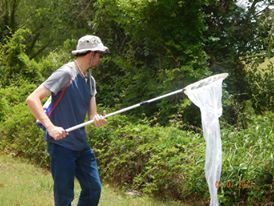
When I am out on an insect adventure I always seem to wind up looking at things that look like they are from a science fiction world. Many of the creatures in the bug world have really peaked my interest but the Dragonflies are one of my absolute favorite insects. We even have a Dragonfly as the Texas Master Naturalist mascot (the Cyrano Darner) I think Dragonflies have a true beauty to them and I love to photograph them. Not only the Dragonflies but their close cousins the Damselflies. Both are in the genus Odonata which translates to “Toothed-ones” Dragonflies come in all different shapes, shades, and sizes and I have been very lucky to meet several of them when on my travels and adventures in nature and I would like for you to meet a few of them so lets see what we can find, shall we.

As the sun sinks low it is time for the Darners to rest after a whole day of hunting on the wing. This guy is called the Swamp Darner. One of the biggest I have seen; the Swamp Darner here was found at a place down in the woodlands of Texas called Jesse H. Jones Nature Center. I went out there a couple of years back and I must say this was a cool place. This guy was spotted by my aunt who has a pretty sharp eye when I don’t notice things. This guy was trying to take a snooze but at one point he took off and buzzed me a couple of times and at one point I thought he was going to land on me. This is a male and he was on a really nice boardwalk trail that was surrounded by tree knees, dense forest, and a lot of Spanish moss. That is one thing I like about south Texas you get to see a lot of nice bits of moss and things that animals can take refuge in. This guy almost blended in perfectly with his surroundings. He was a really dark color with only hints of a blueish green on his abdomen stripes. He is one of the many species I have seen down there. When I am looking for Dragonflies I always like to go near water to look for them but this guy was not anywhere near water. The boardwalk was on a creek system but no recent waters had come in the area so it was pretty dry. This is one of my favorite shots of any dragonfly. This is how they sleep they will latch on to a tree limb or something and just hang around until it is time to hunt again.

Back up near where I live is a place called Crystal Canyon Natural Area. In that park there is a little creek system that runs through it. On one of the bridges I stopped to look at some of the limbs for Dragonflies. In the hot summer time if you are out in the trail and you come across a tangle of branches out by a pond or water way always keep your eyes peeled for dragonflies perch on the native vegetation. This is called a Great Spreadwing Damselfly. Not a dragonfly but it is pretty large. There are a few things you need to know about Odonata to better understand their physical appearance to distinguish what you are looking at. One is that Dragonflies are more stocky and fatter and tend to fly more strongly in the air; they also have broader wings and more of a rounded head. Damselflies tend to be much more skinny than their bigger cousins, they have a head that is triangulated with two bulbous eyes that stick out on either side of its head they also tend to have more a dance more than just sheer force when they fly. They tend to bounce and twirl around when they take to the sky. Most Damsels sit with their wings closed unlike Dragonflies which when at rest sit with their wings open. Unless you are this guy you have have your cake and eat it too. The Spreadwing is what I call a rule breaker and it is a special kind of Damselfly that sits with its wings at a slight ventricle. The Great Spreadwing is the biggest we have here in Texas and it is my favorite of all the Damselflies I have seen. It is large and has the most remarkable coloration to it. I love the emerald green patches on its back; when the sun hits it just right it shines just like it was metallic.

Since we are on the topic of Spreadwings here is another one that I photographed on one my recent outings at Elmer W. Oliver Nature Park in Mansfield Texas. This one was on one of the more densely forested areas out by Walnut Creek out by the Bluebonnet patch. This guy flew right in front of me and I knew what it was when it landed. This one is much smaller than the last one; this guy is known as the Southern Spreadwing. It is pretty cool too with a more darker color scheme going on than the Great Spreadwing. This one is just a touch smaller but still a fairly good size and is easily identified when in the good light. I was kind of in a shady area so it took me longer to get a good enough photo to see what kind of Spreadwing he was.


Okay so I just post two photos of what look like two different damselflies. Are they different species or are they the same? Well actually these are both American Ruby Spots. The redder one is the male and the more emerald one is the female. Sometime these guys like to throw a curve ball and will make you think that you have another species. We animals that have two different color patterns sexually dimorphic. It is just a fancy way of saying that the males look different than the ladies and the ladies look totally different than the guys. If you ever go out to the Lake Lewisville Environmental Learning Area in Texas take a walk down the Bittern Trail that is right next to the river in the summer time. You can most likely see this species in the sunny patches by the river’s banks. These guys like to dance in the grass and other plants that are around there. There are so many species to talk about on my end. Let us meet one I met in Travis County a couple of years back shall we.
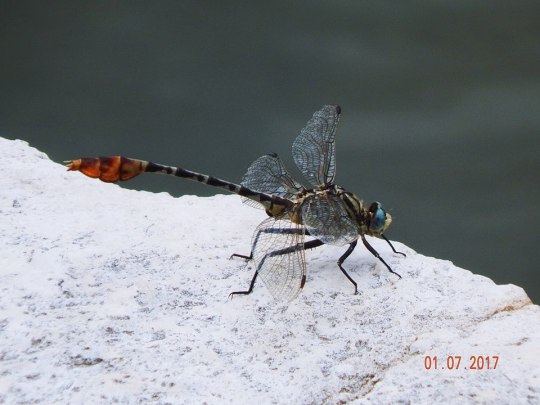
Here is one I got at one of the Metro Parks outside Austin meet the Flag-tailed Spinyleg. These are one heck of a Dragonfly to look at. This one is in the family of Clubtails. Some of the largest Dragonflies of Texas come from this group including my personal fave the Dragonhunter which I have not photographed yet. There was also another flying about that day as well, observe if you will...

This one is called the Four-striped Leaftail. I have a hard time with the names of these because they are so close together and I often just have to wait until I get some kind of confirmation on iNaturalist before I am convinced. There are many different kinds of Club Tails most do sport a lot of back and yellow coloration but also notice their tails if you will. At the end of their tail which is their abdomen is a huge knob. These are what gives this type their name. There are a few others like this one for instance I found a little closer to home at a place called Cliff Nelson Recreation Center.
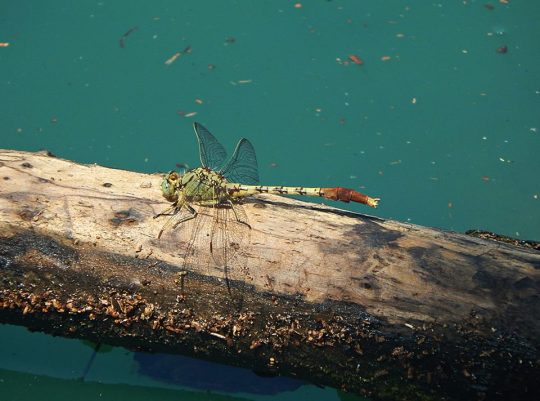
This is the third Clubtail on my life list and it is a little smaller than the previous two. This one is called the Jade Clubtail. This guy is a little greener than most of its kind but is still just as pretty. I saw this one last summer on one of the hottest days of the year. That is one thing about insects the more hotter and more uncomfortable you are the more they will be out. It is fun to hunt for these guys but you have to have a wide brim hat to keep the sun off of you, a cold bottle of water with you in a canteen or something, then you need sunscreen too. Some times I will bring a bandanna with me or an extra rag to get wet so I can wipe my face and neck when I get too much sweat or when I need to cool off. Insect hunting can be easy but if you are really into it like I am and want to see a lot of species all around then you have to bring along a little gear to make the trip a little more easier on ya. I wouldn’t have it any other way though. Dragonflies are one of my favorite groups of insects and I love to watch them zip around the pond. Lets look at some more of these winged beauties before I close the gate on this blog post.
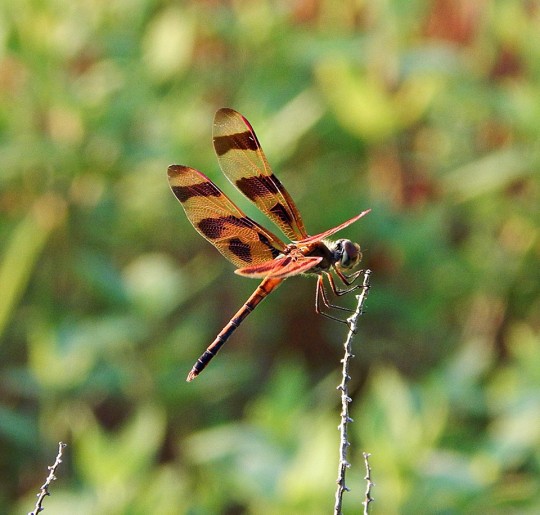
One that I always look for on the pond around late summer to early fall are these guys. These winged beauties are one of my all time favorites and they are not even that big. The Halloween Pennant is one of the most beautiful and appealing Dragonflies I have ever come to face to face too. I used to go to TCC South Campus in Arlington and they have a pond out there well in recent years when I have free time I go back to that pond year after year and get observations for it and they get droves of these every year that I have been there. That pond is one of my favorite places to go to at all times of the year. It is great for birds all year round and good for plants in the spring and the insects in the spring, summer and late fall. I spend a lot of time in Arlington since I got to school and live here. I tend to go to a lot of old stomping grounds at many different times of year just to see what I can find during all four seasons. I don’t go to the old campus to often I spend a lot more time at the one I currently go to which is South Campus. There are a lot of Dragonflies there too but not as many as I have seen at Southeast. For some reason they like that pond a lot more than the on at the campus I go to now. Still seeing these in the summer is really neat they are very easy to recognize and come in great numbers.

One of the coolest and most rewarding Dragonfly chases of my life would have to be when I photographed this guy. It took me about ten minutes to wait until this Twelve-spotted Skimmer got situated for a picture. Sometimes you just have to be patient and wait for your target to land. Sometimes there are some species that just don’t cooperated like your Baskettails and things. The Skimmers are more forgiving and will let you take photo of them landing. This guy was at Elmer W. Oliver at the second pond when I found him. He was flying back and forth and would not settle. I would get my camera in focus but when I would be ready to take the shot he would fly off and then I would have to chase him down again. Normally I give these guys at a fairly good distance. Giving an animal distance is a great way to make them less afraid of you. Sometimes that is all you can do but this guy had too much energy but there was the one point when this photo was taken when he did finally sit still and the reward was the glamour shot. Sometimes patients and persistence does pay off. For me this was the first shot I ever got of this particular species of Dragonfly. It was a really cool capture after a heated chase around the pond. Sometimes in the science field you have to look like an idiot to make some things work. It is something we don’t mind though. Shoot I do all kinds of crazy things to get what I need for citizen science but that is okay. Sure people may think I am weird and crazy like I have lost my gourd but heck I don’t really care what people think of me when I am out doing this stuff.

And last but certainly not least I want to draw your attention to this little guy. There are about three species of Dragonfly that are sure to be out any old summer day in North Texas. This guy is one of them; meet the Blue Dasher. Yet small and common they are one that is good to warm up on. There is not a shortage of them at the ponds that I go to. They are out there all the time. There are also Eastern Pondhawks and Eastern Amberwings which are our Smallest Dragonfly which patrol the ponds as often as these guys do. The pond is a great place to visit weather you are having a picnic by one, out doing a bit of fishing, or just enjoying the serenity of it all. As for me I am always out looking at the bugs around the pond because that is what I do best. Dragonflies are predatory insects and eat other bugs but even thought they are said to be the most adaptable predator of the pond they are still very pretty in their own right. Beauty is in the eye of the beholder but Dragonflies and Damselflies are some of the ponds most treasured gems. They are a sign of resilience and power. They are a truly remarkable and have been on this planet even when the dinosaurs roamed the earth. They are ancient creatures and are one of nature’s greatest success stories. For now I am Zachary Chapman I will see you on the trail.
#odonata#dragonflies#damselflies#nature#wildlife#pond life#rivers#lakes#wings#predators#river life#water#aquatic insects#aquatic life#beauties#beauty#majestic#color#colorful#photographs#camera#macro photography#close ups#close up#perching
1 note
·
View note
Text
Cattails Item Guide!
PREY
Mouse, Common, Sell Price: 3 A dead mouse. No more cheese for you!
Harvest Mouse, Common, SP: 3 A dead harvest mouse. His light brown coat shimmers when light catches it.
Field Mouse, Common, SP: 3 A dead field mouse. He would make a tasty little treat!
Squirrel, Common, SP: 3 The body of a squirrel. His last thoughts were, 'Aw, nuts!'
Grey Squirrel, Common, SP: 3 The body of a grey squirrel. This little guy is having a grey day.
Rabbit, Common, SP: 4 This lil' bunny got bopped on the head.
Black Hare, Uncommon, SP: 5 A jet-black bunny with no more hop in his step.
Crow, Uncommon, SP: 4 A crow. It's seen better days. Dove, Uncommon, SP: 5 The dove is traditionally used to promote peace. This one was unsuccessful.
Bluejay, Ultra Rare, SP: 45 The body of a bright blue bird. It smells delicious.
Cardinal, Ultra Rare, SP: 48 A rare red bird whose beautiful plumage is life-like even in death.
Frog, Common, SP: 2 A frog who now lives in frog-heaven.
Toad, Uncommon, SP: 3 He croaked his last croak as he croaked.
Turtle Meat, Uncommon, SP: 4 He was just too slow!
Trout, Common, SP: 3 A river fish with white speckles on its back.
Salmon, Uncommon, SP: 4 A slender, long, red-and-gray fish.
Bass, Rare, SP: 8 A huge fish with a large mouth.
Catfish, Ultra Rare, SP: 40 A strange fish with long whiskers on its face. Catfish are a rare sight!
Sea Bass, Common, SP: 4 An ordinary sea-dwelling fish.
Mackerel, Uncommon, SP: 6 An uncommon sea-dwelling fish with a slender silver body.
BERRIES
Rasperries, Common, SP: 3 (Rubus Strigosus) Juicy red berries with a sweet taste. Can be used as a quick snack.
Blackberries, Common, SP: 3 (Rubus Laciniatus) Delicious, edible, dark berries that bloom in autumn.
Winter Blueberries, Common, SP: 2 (Vaccinium Boreale) Bright blue berries that grow in the cold months. A tasty treat!
HERBS
Valerian, Uncommon, SP: 3 (Valeriana Officinalis) Pungent flowering herb. Energizes and invigorates cats.
Lavender, Uncommon, SP: 4 (Lavendendule Angustifolia) A pungent herb. You can use its strong scent to gain power for your colony in an area.
Goldenseal, Uncommon, SP: 2 (Hydrastis Canadensis) A plant with a bright red berry. Treats wounds over time.
Marigold, Uncommon, SP: 4 (Caldenula Officinalis) Vibrant orange flowering herb. Treats wounds over time.
Catnip, Rare, SP: 15 (Nepeta Cataria) An irresistibly good-smelling plant. Can be given as a gift or sold for a hefty sum. (Consume to get the Curious Cat achievement!)
Snake Lily, Uncommon, SP: 5 (Amorphophallus Konjac) A poisonous flower. Can be used to apply a toxin to your claws for a short time.
BUGS
Red Ladybug, Common, SP: 1 An ordinary spring ladybug with bright red markings.
Orange Ladybug, Uncommon, SP: 2 An unusual spring ladybug with an orange tint to its hard wings.
Yellow Ladybug, Rare, SP: 2 A rare spring ladybug whose wings are harvest-yellow.
Blue Ladybug, Ultra Rare, SP: 33 Sightings of the blue ladybug are extremely sparse. This exclusive spring bug is a unique cerulean color.
Azure Butterfly, Common, SP: 1 A common summer butterfly with gorgeous cerulean wings.
Painted Butterfly, Common, SP: 1 A common summer butterfly with beautiful crimson wings.
Emperor Butterfly, Uncommon, SP: 2 An unusual summer butterfly with shimmering purple wings.
Tiger Butterfly, Uncommon, SP: 2 An unusual summer butterfly with bright yellow wings.
Iridescent Butterfly, Rare, SP: 3 A rare summer butterfly with a shining, multi-coloured body. Light refracts suddenly upon its dazzling wings.
Tropical Butterfly, Rare, SP: 3 A rare summer butterfly with stunningly diverse markings. It looks a little lost!
Lunar Butterfly, Ultra Rare, SP: 30 A legendary summer butterfly that glows in the dark. It's luminescent shine is captivating!
White Firefly, Common, SP: 1 An odd summer bug that lights up the night. It still glows faintly.
Red Firefly, Uncommon, SP: 2 This litte summer guy gives off a pale red light, illuminating the area nearby.
Yellow Firefly, Uncommon, SP: 2 A flying summer creature with a yellow luminescence. It still glows faintly.
Green Firefly, Rare, SP: 2 The elusive green summer firefly is hard to come by. It can be identified easily enough at night.
Black Firefly, Ultra Rare, SP: 33 Many thought this breed of summer firefly was a myth. The black firefly almost seems to suck light in, rather than glowing.
Southern Damselfly, Common, SP: 1 A common blue dragonfly that emerges in autumn. Its wings are nearly see-through.
Brown Hawker, Uncommon, SP: 2 An unusual brown dragonfly that emerges in autumn. It has little yellow streaks along its head and abdomen.
Banded Darter, Rare, SP: 3 A rare red bug that emerges in autumn. Its wings have small bands of red color that give this dragonfly its name.
Northern Emerald, Ultra Rare, SP: 30 Northern Emerald Dragonflies rarely travel this far afield, but you've managed to catch one! This is an extraordinarily hard to find creature.
MISCELLANEOUS
Turtle Shell, Rare, SP: 10 A prized speckled shell worth a good amount of mews.
Scallop, Common, SP: 2 A common shell found on the beach.
Conch, Rare, SP: 15 A dazzlingly beautiful shell found on the beach.
Red Rose, Ultra Rare, SP: 1 A beautiful flower. Give this item to another cat as a symbol of romantic interest.
Black Rose, Ultra Rare, SP: 2 An ugly dead flower. Give this item to another cat to end your relationship with them.
Shiny Trinket, Ultra Rare, SP: 50 A dazzling trinket of human-make. Give this item to another cat to propose marriage!
Vial of Spring Showers, Common, SP: 6 Use this at any time to summon a light spring rain shower until the end of the day. Single-use.
Confetti Bag, Common, SP: 6 This fun item allows you to make it rain confetti anywhere, anytime. Single-use.
Glow Potion, Common, SP: 6 This spooky item will make your fur shine a bright luminescent color for one minute. Single-use
Bubble Wand, Common, SP: 6 Use this playful item to blow some fun soap bubbles. Single-use.
MINING
Rock Debris, Common, SP: 1 A chunk of rock with trace amounts of ore.
Iron Ore, Common, SP: 1 A deposit of raw iron ore.
Gold Ore, Uncommon, SP: 2 A deposit of raw gold ore.
Topaz, Uncommon, SP: 2 A sparkling yellow gemstone. Liked by most moles.
Sapphire, Uncommon, SP: 3 A sparkling cerulean gemstone. Popular with moles.
Emerald, Rare, SP: 3 A dazzling green gemstone. Popular with moles.
Ruby, Rare, SP: 6 A dazzling red gemstone. Prized by moles!
Diamond, Ultra Rare, SP: 16 An enthralling pale gemstone. Prized by moles!
124 notes
·
View notes
Text
ღ Mini Games Galore ღ
Previous Balance: 1,153,195G New Balance: 1,226,704G

Fishing:
Tool: Mystic Fishing Rod Location: Leuda Beach Weather: Sunny
Sea Bass [ +500G ]
Puffer Fish [ +560G ]
Amago Trout [ +1,300G ]
Angler Fish [ +3,630G ]
Puffer Fish [ +560G ]
Amago Trout [ +1,300G ]
Black Bass [ +280G ]
Amago Trout [ +1,300G ]
Octopus [ +5,400G ]
Sea Bream [ +349G ]
Subtotal: 15,179G Evidence: Picture 1 & Picture 2
Mining:
Tool: Mystic Hammer
Topaz [ +1,700G]
Citrine [ +900G ]
Adamantite [ +2,200G ]
Amethyst [ +1,600G ]
Diamond [ +5,000G ]
Aquamarine [ +1,800G ]
Emerald [ +1,800G ]
Topaz [ +1,700G ]
Light Ore [ +6,000G ]
Moon Stone [ +1,500G ]
Amazonite [ +1,200G ]
Alexandrite [ +5,000G ]
Alexandrite [ +5,000G ]
Subtotal: 35,400G Evidence: Picture 1
Critter Catching:
Southern Firefly [ +450G ]
Purple Brush-Foot [ +220G ]
Evening Cicada [ +350G ]
Purple Brush-Foot [ +220G ]
White’s Tree Frog [ +150G ]
Bushbrown [ +210G ]
Red Dragonfly [ +150G ]
Yellow Damselfly [ +220G ]
Pacific Dragonfly [ +400G ]
Comma Butterfly [ +200G ]
Subtotal: 2,570G Evidence: #minigames-1
Foraging:
Green Herb [ +230G ]
Glass Stone [ +200G ]
Glass Stone [ +200G ]
Rune Crystal [ +5,000G ]
Red Herb [ +250G ]
Wind Crystal [ +800G ]
Poison Mushroom [ +520G ]
Black Rock [ +200G ]
Blue Herb [ +260G ]
Rune Crystal [ +5,000G ]
Subtotal: 12,660G Evidence: #minigames-1
Stone Breaking:
Black Stone [ +800G ]
Black Stone [ +800G ]
Stone [ +500G ]
Stone [ +500G ]
Small Stone [ +200G ]
Black Stone [ +800G ]
Black Stone [ +800G ]
Stone [ +500G ]
Black Stone [ +800G ]
Black Stone [ +800G ]
Subtotal: 6,500G Evidence: #minigames-1
Monster Hunting:
WON Battle 1! - [ +350 EXP & +1,200G ]
Sofia LEVELS UP from Level 21 to Level 22! ATK: 36 + 2 = 38 DEF: 20 + 4 = 24
LOST Battle 2!
LOST Battle 3!
Subtotal: 1,200G Evidence: Picture 1 & Picture 2
Total Subtotal: 73,509G
#pi:money#pi:minigames#pi:fishing#pi:mining#pi:crittercatching#pi:foraging#pi:stonebreak#pi:monsterhunt
0 notes
Video
Willow Emerald Damselfly Chalcolestes viridis. by pete beard Via Flickr: Description Length: Male: 42-47mm; Female: 39-44mm This damselfly is metallic green, with no blue pruinescence on the male. At rest, the Emerald damselflies all spread their wings at an angle to the body, unlike other damselflies. The pterostigma is pale brown with a black border, and the sides of the thorax show a spur-shaped marking. The male upper appendages are distinctively pale cream with dark tips, a feature shared with only one other Emerald Damselfly in the UK, the Southern Emerald Damselfly, which can be differetiated by its two-toned pterostigma (wing-spot).
0 notes
Photo

Southern Emerald Damselfly (by struller)
146 notes
·
View notes
Text











A look back on my 2024: Part 2 of 3-Mammals, dragonflies and damselflies, beetles and others
Another very strong mammalian year in which I saw my highest ever amount of species in a year centred on adorable Red Squirrels as I was lucky to observe them in Scotland and on Brownsea Island. Scotland was an incredible time with so many mammals observed; Stoat and Brown Hare adding to the magic of the wild cottage with lots of wildlife around to see that we stayed in and simply breathtaking wild experiences watching Bottlenose Dolphins on the Moray coast and a Mountain Hare in the Highlands. Roe Deer at the cottage and Red Deer during the week were other highlights with both species key to my year overall with amazing local Roe Deer views and the Bushy Park Red Deer and Fallow Deer experience which was great again in September. I had an amazing year for Stoats seeing two at Rutland Water in July as well and as my fortunes of seeing these species has taken an upturn the past year and a half we got fantastic Weasel views at Bempton Cliffs. We saw Field Voles really well there and got exceptional immersive views of Grey Seals at Flamborough Head. It was a splendid seal year with superb views of Common Seals on the Beaulieu River and in Newtown Harbour on the Isle of Wight on a boat trip in a strong run of mammals standing out in September. A Water Shrew was a surprise first for me as I waded through a flooded path at RSPB Radipole Lake in January and I was overjoyed to see a Water Vole at Rutland Water. Closer to home Fallow Deer and Sika Deer have been great to see in Hampshire and Dorset, with impressive home views of Hedgehogs and I had a magical year of observing beautiful Foxes with top sightings at Southsea and Hook-with-Warsash.
Perhaps unexpectedly again with similar to butterflies as mentioned in my last post a few species I really needed to work for this year I saw my highest ever amount of dragonflies and damselflies this year. It was a green dream for odonata in 2024 with a big moment seeing my first ever Downy Emerald dragonfly at Bentley Wood in May and both Emerald Damselfly and Willow Emerald Damselfly seen at Thurley and Fishlake Meadows respectively. Common, Ruddy and Black Darter gave me thrilling moments this year as did Black-tailed Skimmer with an especially good view of a female at Testwood Lakes and Keeled Skimmer. I was captivated by watching Golden-ringed Dragonflies at Winnall Moors, Testwood Lakes and Fen Bog Nature Reserve. Hawkers owned the summer with a strong couple of months or so seeing Migrant Hawkers and Southern Hawker and Brown Hawker enjoyed too. Azure, Blue-tailed and Large Red Damselflies were also very pleasant to see.
Beetles I suppose took another step up in importance for me this year as I kept a year list of ones I could identify for the first time ever recording twenty species. Green Immigrant Leaf Weevil, Violet Oil Beetle, Bloody-nosed Beetle, Tawny Longhorn beetle and Devil’s Coach Horse Beetle were some of my favourite finds. Once again cantharis rustic soldier beetle, Common Red Soldier beetle, Red-headed Cardinal beetle, Black-and-yellow Longhorn beetle, Swollen-thighed beetle and treasured views of epic Green Tiger Beetles at Bentley Wood in my home area, Strathdearn in Scotland and Fen Bog Nature Reserve in Yorkshire brough vibrant colour to my spring and summer. Dor beetles, ladybirds, Garden Chafer Beetle and Common Malachite Beetle were more delights seen this year.
Some other key species of my year included fascinating Hornet Mimic Hoverfly and Lesser Hornet Hoverfly in the summer, Marmalade Hoverfly, a notable amount of Common Lizards in the summer, frogs and frogspawn, the indomitable Long-winged Conehead one of my key crickets/grasshoppers of the year at Lakeside and Milford on Sea, Mottled shieldbugs, Dock bug, Forest bug, Grey Silverfish and spiders including Long-bodied Cellar spiders at home, lots of snails enjoyed at home and a fascinating Ambersnail seen at Winnall Moors in the summer.
The photos in this set are of; Keeled Skimmer dragonfly at Brownsea Island in September, Common Darter dragonfly at Lakeside in August, Willow Emerald Damselfly at Fishlake Meadows in October, Red Squirrel on Brownsea Island in September, Stoat at Rutland Water in July, Garden Chafer beetle at Magdalen Hill Down in May, Tawny Longhorn beetle on scabious at Shipton Bellinger in August, Hornet Mimic hoverfly at Stockbridge Down and Ambersnail at Winnall Moors in August, Fallow Deer in the New Forest on Good Friday and Long-winged Conehead at Lakeside in August.
#dragonflies#damselflies#beetles#mammals#red squirrel#common seal#grey seal#migrant hawker#downy emerald#bottlenose dolphin#dock bug#outdoors#macro#willow emerald damselfly#nature#walking#england#scotland#uk#world#moray#highlands#brown hare#mountain hare#stoat#europe#britain#wildlife#photography#wildlife photography
9 notes
·
View notes
Text






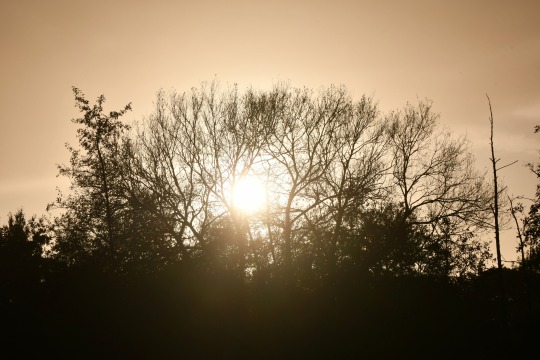



Ten of my favourite photos I took in October 2024 and month summary
The photos are of; fly agaric at Matley Wood in the New Forest, shaggy scalycaps at Lakeside Country Park, Kingfisher at Blashford Lakes, Speckled Wood, Migrant Hawker, Mottled shieldbugs and view at Lakeside, autumn leaves in Winchester and Michaelmas daisies and New Forest Pony at Lymington.
October was a fantastic month of fungi for me. In the peak season I treasured seeing many spectacular, gorgeous and fascinating species including fly agaric, devil's fingers, amethyst deceiver, yellow stagshorn, shaggy scalycap, candlesnuff fungi, bleeding fairy helmet, eyelash fungi, parasol, turkey tail, earthballs, panthercap, false death cap, sulphur tuft and waxcaps. It has also been nice to see slime mould including red raspberry slime mould at a few places and lichen and moss.
I had a brilliant birdwatching month too with some special species seen heading well into autumn. Key species seen were a fair few Kingfishers, Water Rail, Great White Egret, Greenshank, Avocet, Lapwing, Jack Snipe, Sanderling, Common Gull, Pochard, Gadwall, Pintail, Wigeon, Shoveler, Teal, Goosander, Brent Geese, Egyptian Geese, Little Grebe, Marsh Harriers, Siskin, Nuthatch, Great Spotted Woodpecker, Green Woodpecker, lots of Jays seen in their active time of year, notable Ravens at Lakeside and home, Dunnock, Blackcap at Lakeside, Cetti's Warbler, Wren and Long-tailed Tit. Turnstones and Ringed Plover seen well, Tufted Duck, Mute Swan, Moorhen, Coots and Greylag Geese at Lakeside, Jackdaw and Magpie seen a lot, Red Kite in Winchester, Sparrowhawk, Kestrel, Chaffinch, Grey Wagtail seen well and Pied Wagtail were also great to see. Glorious scenes came this month with the return of the Redwings a key bird of the autumn and winter, I was elated to see a Hen Harrier and I was thrilled to see the Winchester Peregrines and Lakeside Great Crested Grebes including their chicks a lot.
There were some nice butterflies to see still with lots of Speckled Woods especially at Lakeside, Red Admiral and Peacock and I was amazed to see a Hummingbird Hawk-moth in Winchester as well as other moths. Dragonflies and damselflies continued to shine this month with so many splendid views of Migrant Hawkers and Southern Hawker and Common Darters too. My first Willow Emerald Damselfly of the year was special to see at Fishlake Meadows. Other insects I enjoyed seeing this month were Mottled shieldbugs and other shieldbugs, wasps and hornets. It was good to see lots of spiders this month too including Long-bodied Cellar spider at home and snails and slugs. In terms of mammals I enjoyed seeing the also active Grey Squirrels a few times, Roe and Fallow Deers and New Forest Ponies.
Key flowers seen this month included Michaelmas daisies, forget-me-not, comfrey, lots of oxtongue, dandelion, tormentil, bell heather, common mallow, white deadnettle, stinging nettle, daisy, water mint, vervain, viper's-bugloss, horseweed, common and ivy-leaved toadflax, hogweed, yarrow, hedge woundwort, ragwort, gorse, dock, herb-Robert and wood avens which brought some wonderful colour as it quietened down for flowers. Wild carrot, teasel, hemp agrimony and spear thistle were among pretty seed heads enjoyed this month with cleavers enjoyed too. There was also a great display of berries this month again with rose hips, hawthorn berries, guelder rose berries, dogwood berries, nightshade berries and snowberries creating vibrant scenes.
And of course this month the splendour of autumn's colour was captivating and wholesome to observe. I also enjoyed taking in many great other vistas this month including coast, reedbed and general wetland, rivers and New Forest heaths and woodland. There were some special sky scenes observed this month too. Have a great November all.
#kingfisher#hen harrier#water rail#autumn#fly agaric#shaggy scalycap#amethyst deceiver#devil's-fingers#speckled wood#migrant hawker#lakeside country park#lymington#splendid#flowers#forget-me-not#hemp agrimony#world#earth#europe#nature#outdoors#england#october#memories#hawthorn#rose hips#marsh harrier#avocet#pintail#pochard
7 notes
·
View notes
Text









Nine of my favourite flora and fauna photos I took in September 2024 and month summary
The photos are of; Red Deer at Bushy Park, Common Seal on the Beaulieu River, young Coot at Bushy Park, Barn Owl in a flying display at the Hawk Conservancy Trust, Clouded Yellow at Milford on Sea, Lesser Yellow Underwing moth at home, Ruddy Darter on Brownsea Island, Common Lizard at Thursley and hawthorn berries with a ladybird on.
Some of my most magical wild moments of a mesmerising September were watching mammals; immersive views of Common Seals and Grey Seals, enchanting Red Squirrels and ravishing Red, Roe, Fallow and Sika Deers bringing glorious late summer/autumn feelings of splendour. Grey Squirrel, Rabbit and Brown Rat provided some nice moments too.
It was a marvellous month of avian movement with many of my top birds of a fine birding moth enjoyed on migration in and out including Ospreys, Hobby, Bar-tailed Godwit, Whimbrel, Curlew Sandpiper, Brent Geese, Pintail, Wigeon, Wryneck, Pied Flycatcher, Spotted Flycatcher, Wheatear, Whinchat, Yellow Wagtail, a rare for Lakeside Tree Pipit seen on my patch, a Chiffchaff in the garden and unusually Sand Martin at Bushy Park and epic scenes of many House Martins and a few Swallows moving through places. Other highlights this month included incredible views of majestic White-tailed Eagles twice at Newtown and Poole Harbours, Marsh Harriers, Sparrowhawks including one coming into the garden, Kestrel, Sandwich Terns, Shag, Curlews, Common Gulls, Mediterranean Gull, Egyptian Geese, Gadwall, Teal, Shoveler, Starlings, Ring-necked Parakeet, Grey Heron, Greenshanks, Sanderlings, Turnstone, Ringed Plover, Snipe, Great White Egret, Cattle Egrets, Little Egrets, captivating views of Spoonbills in Poole Harbour, Little Grebes, Whitethroat, Grey Wagtail, Rock Pipit, Dartford Warbler, Cetti's Warbler heard and Kingfisher. Cormorant, Stonechat, Jay, Green and Great Spotted Woodpecker and lots of nice views of Great Crested Grebes including the chicks, Moorhens and Coot were other highlights at Lakeside. It was great to spend a day spellbound by birds of prey and others on an amazing day at the wonderful Hawk Conservancy during the super week off of day trips with so many phenomenal places visited and much wildlife seen.
Butterflies did quieten down this month for me but I saw some fantastic ones, headlined by adding the excellent Clouded Yellow to my year list a great final piece of the jigsaw to another memorable butterfly year for me. I also really enjoyed seeing Small Coppers at Bushy Park and Southbourne, Meadow Brown, Small Heath, Speckled Wood especially seen well at Lakeside, Common Blue, female Adonis Blue at Old Winchester Hill, Green-veined White, numerous Small Whites and Large Whites especially on sunny days, beautiful Painted Ladies, Red Admirals and Peacock. I enjoyed seeing a fair few moths this month too including dashing Willow Beauty, Garden Carpet, L-album Wainscot, Light Brown Apple moth, sumptuous Lesser Yellow Underwings, pretty Lunar Underwing, Square-spot Rustic and Silver Y and Vestal in the day. Dragonflies and damselflies took a large amount of the limelight again as they dazzled at this well lit and beautiful time of year, Brown Hawker, thrilling Black Darter, Common Darter and Ruddy Darter views, Keeled Skimmer on Brownsea Island, resplendent Migrant Hawker, gigantic and eyecatching Southern Hawker and exquisite Emerald Damselfly were special to see.
It was captivating to watch Common Lizards at Thursley Common and a Common Frog on a wet New Forest walk at Puttles Bridge. Symbolising the shift to autumn I saw loads of craneflies this month which was memorable. I also enjoyed seeing Long-winged Conehead, Common Green Lacewing, hoverflies, bees, wasp, hornet, enigmatic Devil’s coach horse beetle and ground beetle at Thursley, ladybird, Forest Bug, Dock bug, and Grey Silverfish and spiders at home.
Key flower/plant sightings this month included my first ever skullcap at Bushy Park, lots of great devil’s-bit scabious one of my favourites, harebell, common toadflax, restharrow, marjoram, wild basil, water mint, great willowherb, sundew, bog asphodel, sea rocket, wild radish, seaside daisies, sand spurrey, yellow-horned poppy, sea kale, rock samphire, mercury yarrow, wild carrot, pineappleweed, mignonette, hedgerow crane’s-bill, red clover, white clover, comfrey, a strong month for yellow with ragwort, fleabane, tormentil, sowthistle, oxtongue and autumn hawkbit, montbretia, self-heal, gorse, ivy, plantain, black medick and bell and common heather painting the landscape a splendid purple. There was a lot of nice fruit to see including apples, dogwood berries, guelder rose berries, rowan berries and fine ruby hawthorn berries. Sunflower, pretty fuchsia, buddleia, roses, rose hips, firethorn berries and other colourful plants were nice to see at home this month.
#september#summer#autumn#craneflies#hawthorn berries#ladybird#common lizard#ruddy darter#lesser yellow underwing#clouded yellow#barn owl#coot#red deer#common seal#red squirrel#2024#outdoors#walking#bushy park#thursley common#lakeside country park#poole harbour#brownsea island#isle of wight#newtown harbour#surrey#hampshire#eastleigh#dorset#england
3 notes
·
View notes
Text


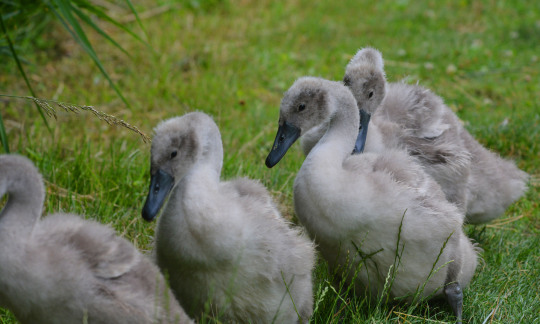

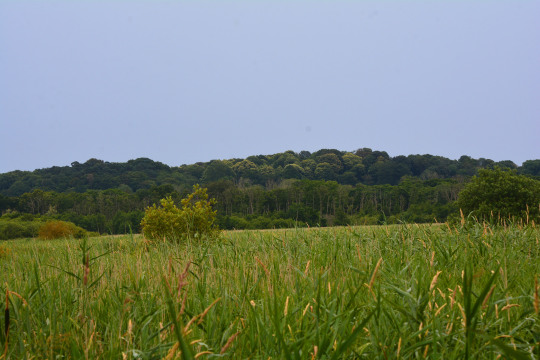
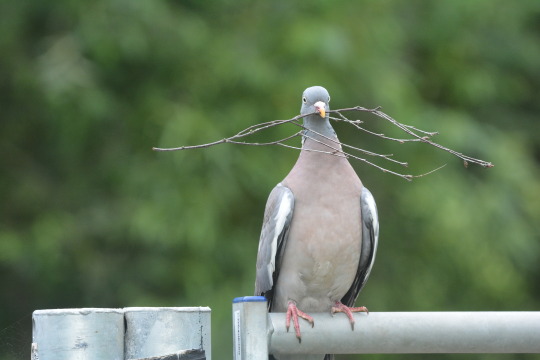

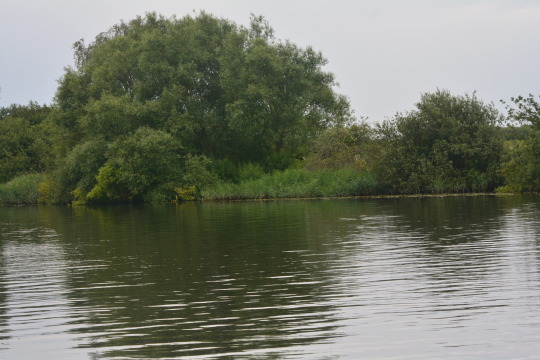
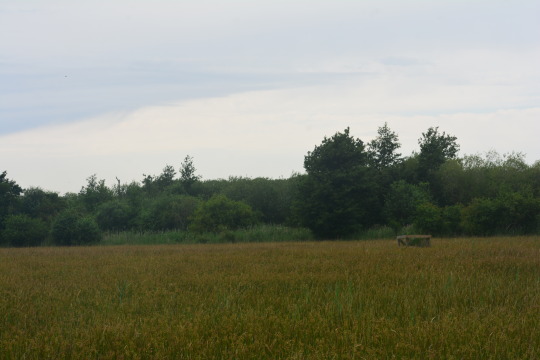

09/07/2023-RSPB Strumpshaw Fen
Pictures taken in this set: 1. A lovely Grey Heron, a key bird of the weekend trip. 2. The majestic Marsh Harrier we so enjoyed seeing from a hide, seeing others well on the walk round. They are such beautiful and striking birds, one I do really love seeing and I've had a fantastic year for them so far. 3. Follow the leader: Mute Swan cygnets. 4. Delicate meadowsweet and great willowherb. 5, 7, 8, 9 and 10. Views at this picturesque Fen reserve including of the expansive and lovely River Yare. 6. A Woodpigeon with a twig in its mouth on a gate which was a feel good and quirky image to take away from the day.
It really was a brilliant walk round this rich reserve, with seeing my first ever Norfolk Hawkers - exquisite emerald eyed dragonflies dashing around stream and vegetation - the key moments from the day. I feel so lucky we saw them. Brown Hawker, Black-tailed Skimmer, Emperor, possible Southern Hawker and Common Blue Damselfly, Banded Demoiselle and darter were other great dragon and damselflies to see. Comma, Red Admiral white butterflies including Small White and Green-veined White I believe, Large Skipper, Silver Y moth, Kestrel, Sedge Warbler, Jay, Swift, Common Tern, Great Crested Grebe and chicks which was good to see somewhere different to Lakeside, Little Grebe, Mallard and ducklings, Great White Egret a very key bird of the weekend away, ladybird, possible ladybird larva, Common Red Soldier beetle and a marvelous Muntjac Deer shuffling over the path right at the end - a magical and euphoric moment I love seeing them - were other highlights. Other key plants of the many seen on the walk were hemp agrimony, purple and yellow loosestrife, white clover, pineappleweed, heath-spotted orchid, self-heal, herb-Robert, red campion, marsh bedstraw, hedge woundwort, thistle, bird vetch, valerian and plantain.
#photography#nature#uk#england#happy#world#norfolk#east anglia#fens#strumpshaw fen#rspb strumshaw fen#common red soldier beetle#muntjac deer#photos#hampshire#flowers#birdwatching#birds#purple loosestrife#yellow loosestrife#norfolk hawker#brown hawker#great white egret#grey heron#common tern#great crested grebe#walk#hedge woundwort#europe#2023
11 notes
·
View notes
Text
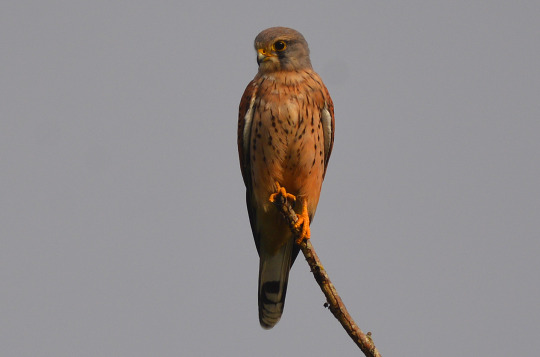


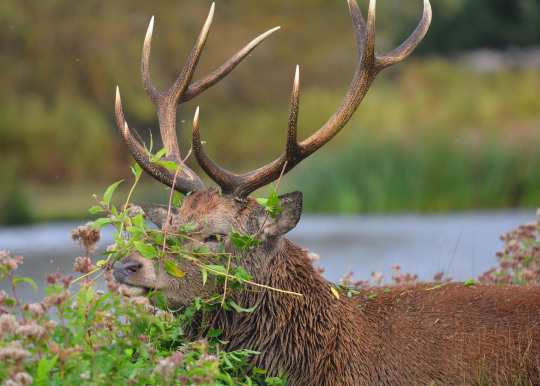
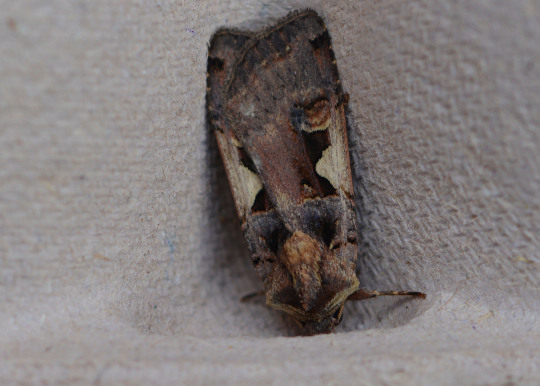
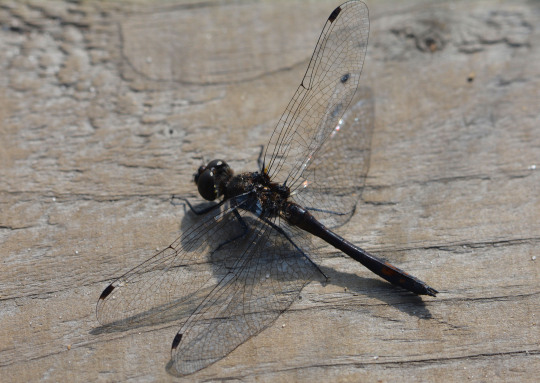
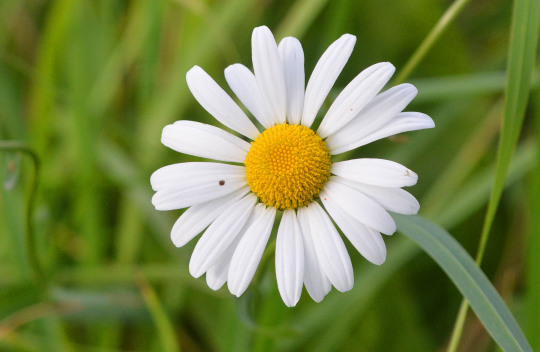
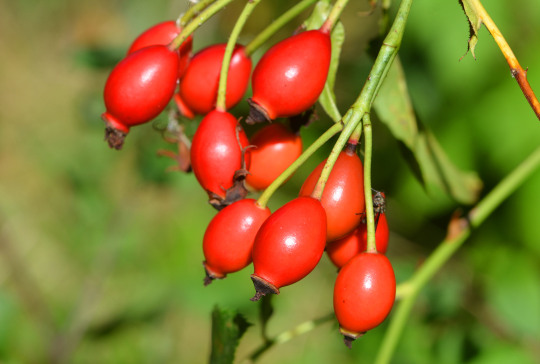
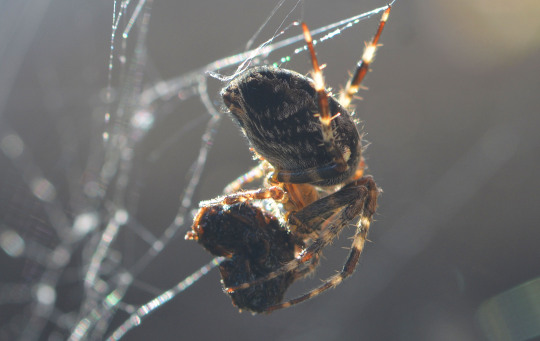
Nine of my favourite flora and fauna photos I took in September 2023 and month summary
The photos are of; Kestrel at Lakeside Country Park, Clouded Yellow at Old Winchester Hill, Osprey from a boat trip around Poole Harbour with Birds of Poole Harbour, Red Deer at Bushy Park, Setaceous Hebrew Character at home, Black Darter at Thursley Common, oxeye daisy and rose hips at Lakeside and spider with prey in the front garden.
As hoped in the midst of bird migration, changing times in the year and with this past week off work to pack with big trips September was a super and packed wildlife watching and photography month for me with so much seen and many places visited. For birdwatching migration was the theme of the month again as I picked up birds I needed Yellow Wagtail and Little Stint with a few seen for my year list, seeing the Red-necked Phalarope a week ago Pennington brought in by a storm was a massive bonus as a top species for my birding year and Monday's Minsmere trip paid off to allow us to see one we wanted to a Bittern. It's surely been my finest year of Ospreys with the amount I've seen and September contained much of the string of late summer/autumn sightings in the south which has been a phenomenal run for me. Other standout birds for me this month have of course been those two White-tailed Eagles seen on the boat trip too, Marsh Harrier, Peregrine, Hobby, a fair few Avocets, Ruffs and Curlew Sandpipers such fine and gorgeous waders in a strong wader month, Spoonbill and a smartly marked and colourful duck quartet of many Teals and Gadwall and Wigeon and Shoveler. Great Crested Grebe, Kingfisher, Great Spotted Woodpecker and Jay alongside Kestrel and Coot were patch highlights at Lakeside this month with Jays enjoyed elsewhere as we get further into autumn.
For butterflies the final piece of my extraordinary 2023 jigsaw was laid when we excitingly saw our first Clouded Yellow of the year on a hot and sunny day at the start of the month at Old Winchester Hill, an exhilarating moment with an exquisite species. Whilst the butterfly season quietened down overall in a month with a fair bit of hot and sunny weather a few species prevailed/re-emerged into my year with great and in places numerous times seeing Small Copper, Small Heath, Meadow Brown, Speckled Wood, Green-veined White, Peacock, Comma and of course Red Admiral this month with me making the most of Chalkhill and Adonis Blue in the Old Winchester Hill visit. For much of the month we did moth traps at weekends, this delve into an activity we hadn't done before allowed us to see many gems such as the Setaceous Hebrew Character, Small Blood-vein, Treble-bar, Garden Carpet, Lesser Broad-bordered Yellow Underwing, Large Yellow Underwing, Light Emerald, the Nutmeg, Vine's Rustic and loads of L-album Wainscots, Willow Beauty and Square-spot Rustics. It was fun doing this and the Snout was a key moth this month that came into the house.
Dragonflies and damselflies did take the baton from butterflies a bit as expected, with many wonderful views of Migrant Hawker, Southern Hawker and Common Darter such key species as the season goes on at a few places and Blue-tailed Damselfly and Common Blue Damselfly. Alluring miniature Black Darters at Thursley were a treat to see on Tuesday with them my first of the year my dragonfly and damselfly year list like my five others this year became my highest ever, and I was thrilled to see Emerald Damselflies again this year at Minsmere and Thursley this week. It was a really good month for areas of nature I'm less familiar with especially spiders with many seen well from orbweavers out the front to a harvestman at Thursley. Hornet, bees, wasp, beetles, ants, crickets and grasshoppers were highlights this month too.
It was a mega mammal month with Red, Fallow, Sika and Muntjac Deer, Red Squirrel and Water Vole massive species of the week off over the past week real big highlights of my wildlife year, and I saw Rabbit, Roe Deer and Grey Squirrel well this month. For flowers the season waned a little but species such as common toadflax, devil's-bit scabious, creeping thistle, wild carrot, pineappleweed, ragwort, water mint, common, musk and marsh mallow and heathers kept me going. Sundew was a blockbuster of my month this week at Thursley. In a bumper year for hawthorn especially I was very much taken by fruits this month enjoying loads of hawthorn and rose hips, blackthorn sloes, guelder rose berries and acorns especially. I also enjoyed seeing seed heads of the likes of carrot, hogweed and ragwort too. Shortly I shall do another post with nine of my favourite landscape and fungi photos I took this month and some thoughts. I hope you all have a good October.
#photography#clouded yellow#old winchester hill#kestrel#lakeside country park#osprey#poole harbour#setaceous hebrew character#eastleigh#black darter#thursley#thursley common#surrey#dorset#hampshire#rspb minsmere#suffolk#red deer#bushy park#london#oxeye daisy#spider#rose hips#september#white-tailed eagle#small copper#migrant hawker#light emerald#europe#england
2 notes
·
View notes
Text



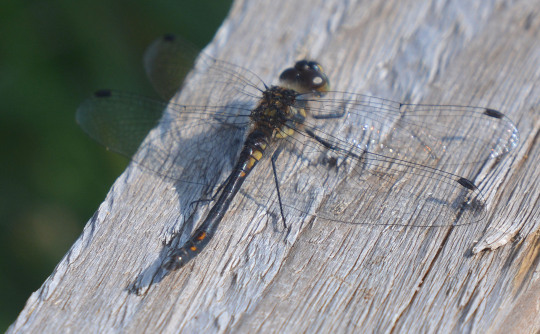

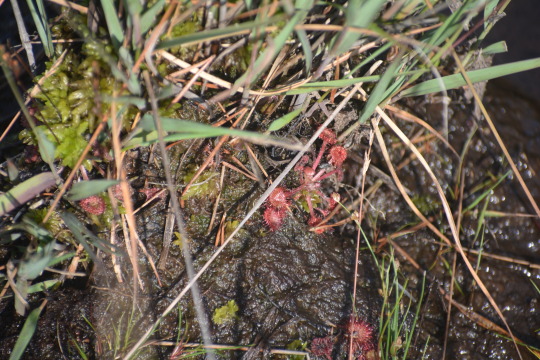

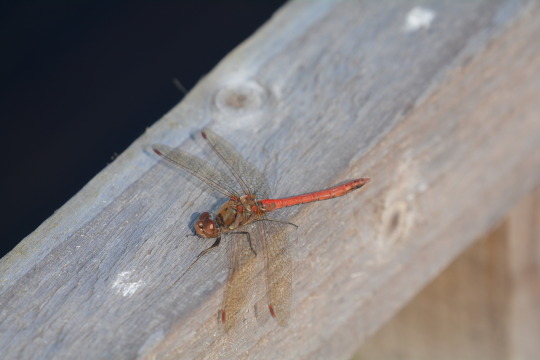


26/09/23-Thursley
Flora and fauna photos in this set are of: 1. A majestic Hobby it was a true joy to see gliding through the blue sky early on in the amazing time we spent here today. A quintessential bird of this habitat teeming with their famous prey dragonflies, I felt so honoured to get such fine and spectacular views of this beautiful bird I adore as I watched it swoop and noticed from this photo I was pleased to get of it that it has prey in its talons. 2. A Common Lizard, I believe the first of any I'd seen this year there were loads basking in the sun on the boardwalk today, big and small, it was enthralling to see these sparkling reptiles. 3. One of a few Red Kites it was great to see today too, seeing one circle overhead closely and fly over the bright blue water. 4. A stunning Black Darter, I am so pleased that we saw these today as it was the main thing I wanted to see here. It's a special sighting as my first of the year and first of the species I'd seen for two years as it takes my dragonfly and damselfly year list to 21 making it my highest ever. That means in 2023 all five of the year lists I keep (this one, birds, butterflies, moths and mammals) are my highest ever which is something I'm so thrilled about and underlines the incredible year I'm having for watching wildlife with so much seen. This has always been the main place for us for this species and today you couldn't move for them in parts of the board walk, it was amazing to see so many and get striking intimate views of them with some staying put long enough for a photo with my macro lens unusually for dragonflies. 5. Some bog asphodel I enjoyed seeing. 6. Some smashing round-leaved sundew it was a treat to see. 7. Emerald Damselfly, a star damselfly of my day, week and year. 8. Common Darter another seen so well today again this year, it was lovely to see these and the Black Darters mating and egg laying. 9. One of a few Stonechats it was nice to see. 10. Harvestman spider.
In a raptor fest other great birds of prey seen were Kestrel and Buzzard, and sensational views of singing Woodlarks including in the air and Dartford Warbler seen were two more Thursley specialties we enjoyed seeing. Jay, a few Carrion Crows, Jackdaw, Magpie, Pied Wagtail, a fair few House Martins, flocks of Meadow Pipits and Goldfinches, Siskin, Linnet, Mallard, a great pair of Little Grebes and Green Woodpecker heard were other bird highlights today. Red Admiral, Small Copper, Common Blue Damselfly, Migrant and Southern Hawker, grasshopper probable Meadow Grasshopper, Box Tree moth, hornet, a red ant and beautiful Fox moth caterpillars were other notable insects seen today. Other standout plants seen were of course heather with some still looking nice and purple I believe we saw bell and common heather and cross-leaved heath, gorse, rosebay willowherb, tormentil, devil's-bit scabious, cotton grass and hawksbeard/ox tongue.
#photography#hobby#black darter#red kite#dartford warbler#woodlark#migrant hawker#dragonflies#dragonfly#common darter#small copper#red admiral#outdoors#walking#falcon#harvestman#spider#sundew#round-leaved sundew#birdwatching#flowers#plants#2023#thursley#thursley common#surrey#europe#england#uk#walk
5 notes
·
View notes

